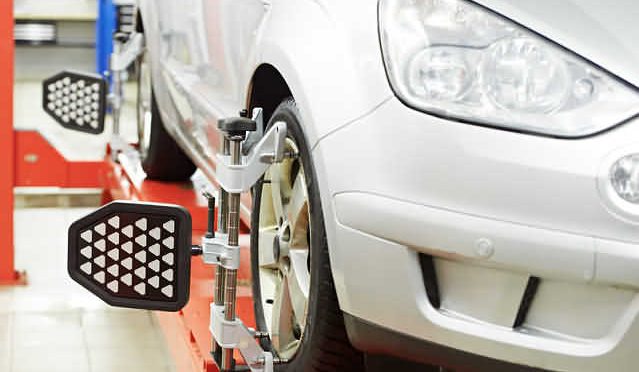Table of Contents
Wheel Alignment Explained
Wheel Alignment Explained
Alright, folks, let’s dive into a topic that might not be on everyone’s radar but is absolutely crucial when it comes to keeping your car running smoothly –
Castor and camber.
These two elements are like the unsung heroes of your car’s steering geometry, and understanding their importance can make all the difference in your driving experience.
So, picture this: you’re cruising down the road, wind in your hair (or not, depending on your style), and you notice that your car isn’t handling as it should. It feels a bit wonky, and you’re constantly correcting the steering wheel. Well, my friends, that could very well be a castor and camber issue.
Let’s start with castor, shall we?
Castor is all about the angle at which your car’s steering axis tilts. In simpler terms, it’s the angle of your steering pivot when you look at it from the side. Think of it like the fork on your bicycle – when it tilts forward or backward, it affects how your bike steers. The same goes for your car.
Now, why is castor so important?
Well, it plays a significant role in stability and self-centring of your steering. When you’ve got the right amount of castor, your car will naturally want to go straight ahead without you constantly wrestling with the wheel. It’s like having a built-in compass for your car. On the flip side, if your castor angle is off, you’ll experience all sorts of steering woes.
Too much positive castor can make your steering heavy and sluggish
While too much negative castor can lead to instability, especially when cornering. Finding that sweet spot is essential for a smooth ride.
Now, let’s talk about camber: Wheel Alignment Explained
The tilt of your wheels when viewed from the front or rear of the car. Imagine looking straight at your car head-on. If the tops of your wheels lean outward, that’s positive camber; if they lean inward, its negative camber. This might sound a bit like a geometry lesson, but bear with me because it’s vital.
Camber affects your tyre’s contact patch with the road.
When you’ve got the right camber angle, your tires wear evenly, and you get optimal grip during turns. But when it’s off, you’ll notice uneven tyre wear, reduced traction, and that dreaded feeling of your car pulling to one side.
So, why does this all matter?
Well, it’s not just about the smoothness of your ride; it’s also about safety. Correct castor and camber angles ensure that your tyres make full contact with the road surface, especially during those hairpin turns or emergency stops. And who doesn’t want maximum grip when it matters most?
But here’s the thing: Wheel Alignment Explained
castor and camber aren’t set in stone. Over time, they can go out of whack due to normal wear and tear, hitting potholes, or even minor accidents.
That’s why regular wheel alignments are crucial. It’s like giving your car a check-up to make sure everything’s in tip-top shape. So, my fellow road warriors, the next time you’re behind the wheel and something feels a bit off, remember the unsung heroes of steering geometry – castor and camber.
They might not get the spotlight, but they play a vital role in keeping you safe and your ride smooth. Get that alignment done, and you’ll be cruising like a champ in no time. Safe travels!
Camber plays an important role in wheel alignment, as explained. Caster and toe both work in conjunction with camber to ensure proper tyre wear as well.
Wheel Alignment Explained, because it is a very important part of your car’s overall performance. This is not known by many car owners.
In my opinion, caster, camber, and toe are not things that the general public wants to know about?
They just want to know that their wheel alignment is correct and adjusted correctly.
I do feel that caster and camber will become more important in the future, with integrated electronic systems that will link the tyres, steering, and suspension more closely together.
This will be carried out on the expensive super-cars at first, before it is rolled out on the regular cars that you and I drive. Caster, camber, and toe can be better seen on the image rather than trying to explain them.
In my opinion, it becomes a little bit too complicated for the general public to know about. Mechanics should know to give them a clearer understanding of the mechanics of steering when carrying out a wheel alignment.
Wheel Alignment Explained
Wheel alignment explained does not go too deeply into the inner depths of steering geometry, and as long as our customers trust us to carry out a good job, then that is all that counts.
Caster and camber are something that are most affected when a car has a front end bump. This causes the front steering and suspension to become out of line. if this happens then the accident repair centre, has to completely realign your cars steering and suspension.
This is done using highly specialised and expansive equipment.
This equipment is very accurate and uses laser beams to help the technician to realign the cars steering. This is also done from corner to corner and is known as four wheel alignment.
In most cases your car will just require a normal wheel alignment to correct the cars steering back to the original settings. The cost of this should be no more than £30 at your local tyre centre or garage.
Wheel Balancing should not be confused with Wheel Alignment? they are two completely different things.
- Buy Best Tyres you can Afford
- Driverless cars
- Top 5 Best winter tyres
- Michelin CrossClimate Tyres
- Pilot Sport Cup 2
http://www.pellonautocentre.com/blog/wheel-alignment-balancing/

